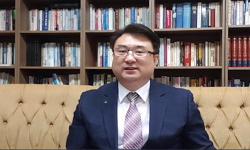19세기 한국어 이중 언어 사전은 대역어 중심의 어휘집 형식을 갖추면서도, 단순한 번역 도구를 넘어 당시 외국인 편찬자들의 언어 기술 방식과 문화적 인식을 담은 중요한 역사적 자료다. ...
http://chineseinput.net/에서 pinyin(병음)방식으로 중국어를 변환할 수 있습니다.
변환된 중국어를 복사하여 사용하시면 됩니다.
- 中文 을 입력하시려면 zhongwen을 입력하시고 space를누르시면됩니다.
- 北京 을 입력하시려면 beijing을 입력하시고 space를 누르시면 됩니다.

19세기 한국어 이중 언어 사전 고찰 - 『노한사전』(1874), 『한불자전』(1880),『한영자전』(1890),『한영자전』(1897)을 중심으로 - = Bilingual Dictionaries Involving Korean in the 19th Century - A Lexicographical Analysis -
한글로보기https://www.riss.kr/link?id=A109736619
-
저자
박수빈 (연세대학교)
- 발행기관
- 학술지명
- 권호사항
-
발행연도
2025
-
작성언어
Korean
-
주제어
사전학 ; 푸칠로 ; 파리외방선교회 ; 언더우드 ; 게일 ; 노한사전 ; 한불자전 ; 한영자전 ; 이중 언어 사전 ; lexicography ; M.P. Putsillo ; F.C. Ridel ; H.G. Underwood ; J.S. Gale ; Russian-Korean Dictionary ; Korean-French Dictionary ; Korean-English Dictionary ; bilingual dictionary.
-
등재정보
KCI등재
-
자료형태
학술저널
- 발행기관 URL
-
수록면
38-67(30쪽)
- 제공처
-
0
상세조회 -
0
다운로드
부가정보
국문 초록 (Abstract)
19세기 한국어 이중 언어 사전은 대역어 중심의 어휘집 형식을 갖추면서도, 단순한 번역 도구를 넘어 당시 외국인 편찬자들의 언어 기술 방식과 문화적 인식을 담은 중요한 역사적 자료다. 본고는 대표적인 네 종류의 이중 언어 사전−푸칠로의 『노한사전』(1874), 파리외방선교회 한국선교단의 『한불자전』(1880), 언더우드의 『한영자전』(1890), 게일의 『한영자전』(1897)−을 대상으로 그 편찬 목적, 사전의 거시·미시 구조, 표제어의 문화적 특성 등을 비교 분석했다. 특히 친족어, 종교 용어, 사회 문화적 표제어의 수록 방식과 설명 양상은 사전 편찬자의 시각과 텍스트 목적에 따라 상이한 문화 기술 방식이 작동했음을 보여 준다. 이러한 분석은 19세기 사전을 단순한 대역 어휘집으로 평가하는 것을 넘어, 당대 한국어와 외국어, 한국과 외국 문화의 접촉을 담은 복합적 텍스트로서 새롭게 해석하려는 시도다.
다국어 초록 (Multilingual Abstract)
The Korean bilingual dictionaries of the 19th century were primarily compiled as wordlists for translation, yet they also serve as valuable historical records that reflect the linguistic strategies and cultural perceptions of foreign compilers. This s...
The Korean bilingual dictionaries of the 19th century were primarily compiled as wordlists for translation, yet they also serve as valuable historical records that reflect the linguistic strategies and cultural perceptions of foreign compilers. This study examines four representative dictionaries—Putsillo’s Russian-Korean Dictionary (1874), the Korean-French Dictionary (1880) compiled by the Paris Foreign Missions Society, Underwood’s Korean-English Dictionary (1890), and Gale’s Korean-English Dictionary (1897). Through comparative analysis of their compilation purposes, macro- and microstructures, and the treatment of culturally specific entries, this paper highlights the distinctive ways in which Korean language and culture were perceived and documented. Particular focus is placed on kinship terms, religious vocabulary, and culturally embedded expressions, which reveal the varying textual strategies shaped by the compilers’ backgrounds and goals. This study reinterprets these dictionaries not as mere tools for translation but as complex texts that record early instances of intercultural linguistic contact and the beginnings of systematic Korean language description by foreign authors.
동일학술지(권/호) 다른 논문
-
뜻풀이의 교육적 활용 - 영어 관사의 정보를 중심으로 -
- 한국사전학회
- 송효원
- 2025
- KCI등재
-
- 한국사전학회
- 남소현
- 2025
- KCI등재
-
생성형 AI를 활용한 한국어 신어의 사전 항목 자동 생성과 평가
- 한국사전학회
- 유세인
- 2025
- KCI등재
-
『보정 신자전(補訂 新字典)』의 정(訂)의 양상 고찰 - 자형과 한자음의 수정 방식을 중심으로 -
- 한국사전학회
- 신상현
- 2025
- KCI등재




 KCI
KCI DBpia
DBpia




